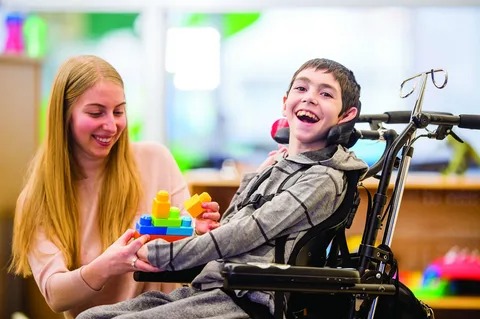Cerebral palsy is a neurological condition that affects movement and posture. It is caused by damage to the brain before, during, or shortly after birth. Children with cerebral palsy often have difficulty with coordination, balance, and muscle control. They may also experience joint stiffness, contractures, and scoliosis. While there is no cure for cerebral palsy, pediatric orthopedics can play an important role in managing the condition and improving the quality of life for children with this condition.
One of the most common issues that children with cerebral palsy face are joint stiffness and contractures. This can cause pain and limit their ability to move and participate in everyday activities. Pediatric orthopedic surgeons can perform surgeries to release tight muscles and tendons, allowing for better mobility and reducing pain.
Another common problem that children with cerebral palsy face are scoliosis, a curvature of the spine. Scoliosis can cause back pain, and breathing problems, and affect the overall quality of life. Pediatric orthopedic surgeons can perform spinal fusion surgery to correct scoliosis and prevent further curvature of the spine.
Orthotics and prosthetics are also frequently used in the treatment of cerebral palsy. Orthotics are devices that are worn on the body to support and improve function. They can help improve gait and balance, reduce contractures, and provide support for weak or unstable joints. Prosthetics, on the other hand, are artificial limbs that can help improve mobility for children with limb differences or amputations.
Physical therapy is another important aspect of pediatric orthopedic care for children with cerebral palsy. Physical therapists can help children improve their strength, flexibility, and coordination through exercise and other therapeutic interventions. They can also help develop strategies for children to participate in everyday activities and improve their overall quality of life.
Finally, pediatric orthopedic care for children with cerebral palsy often involves a team-based approach. This may include working with pediatric neurologists, physical therapists, occupational therapists, and other specialists to develop a comprehensive treatment plan that addresses all aspects of the child’s care.
In conclusion, pediatric orthopedics plays an essential role in the management of cerebral palsy in children. Through surgical interventions, orthotics, prosthetics, physical therapy, and a team-based approach, pediatric orthopedic specialists can help children with cerebral palsy improve their mobility, reduce pain, and improve their overall quality of life.
